-
Khiva, main gates Ota Darvaza
-
Khiva
-
Bukhara, Nodir Divan-Begi madrassah
-
Bukhara, Ark Fortress
-
Tashkent, Khast Imam Square
-
Bukhara
-
Samarkand, ensemble Shakhi Zinda
-
Bukhara, view on to Miri-Arab madrassah, XVI c.
-
Kyzylkum desert, riding on camels
-
Konigil village, silk paper center, noria
-
Sherdor madrassah, Samarkand
-
Samarkand, Registan Square
Kyrgyzstan
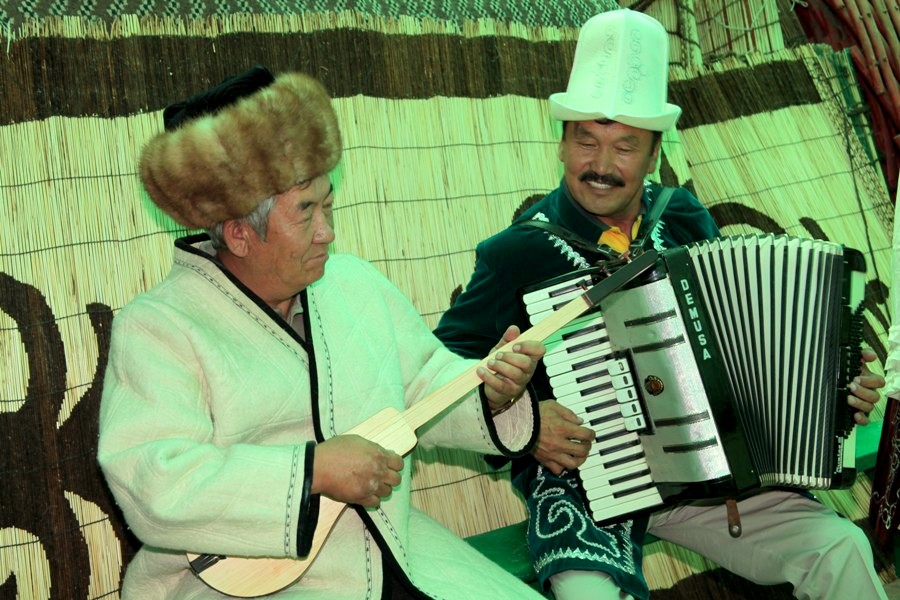 Asian crown jewel in ancient empires, Kyrgyzstan has been little explored by tourists. And it is in vain - by the abundance of natural and historical attractions, opportunities for beach recreation, treatment and skiing, this country really has no equal. "Celestial mountains" Tien Shan and Pamir mountain ranges stretch on the territory of Kyrgyzstan. Here the purest alpine lake Issyk-Kul conceals the treasures of Genghis Khan; here grow relict walnut forests and beat hot sulfur springs.
Asian crown jewel in ancient empires, Kyrgyzstan has been little explored by tourists. And it is in vain - by the abundance of natural and historical attractions, opportunities for beach recreation, treatment and skiing, this country really has no equal. "Celestial mountains" Tien Shan and Pamir mountain ranges stretch on the territory of Kyrgyzstan. Here the purest alpine lake Issyk-Kul conceals the treasures of Genghis Khan; here grow relict walnut forests and beat hot sulfur springs.However, for an idle observer Kyrgyzstan has prepared a lot of surprises: colorful yurts and felt carpets, mare milk and Osh pilav, traditional horse races, songs, tales and legends. In short, Asia in all its glory - that's what Kyrgyzstan is!
The country is situated in the eastern part of Central Asia, mainly within the western and central parts of the Tien Shan and the northern part of the Pamir. It shares borders with Kazakhstan to the north, with Uzbekistan in the west, with Tajikistan in the south-west, with China in the south-east and east.
According to National demarcation of the Soviet republics of Central Asia on October 14, 1924, Kara-Kyrgyz was established (May 25, 1925 it was renamed Kyrgyz Autonomous Region) - an autonomous region within the Russian Soviet Federative Republic. February 1, 1926 it was transformed into the Kyrgyz Autonomous Soviet Socialist Republic, and in December 5, 1936 - in the Kyrgyz SSR. August 31, 1991 during the collapse of the Soviet Union Kyrgyzstan proclaimed the independence.
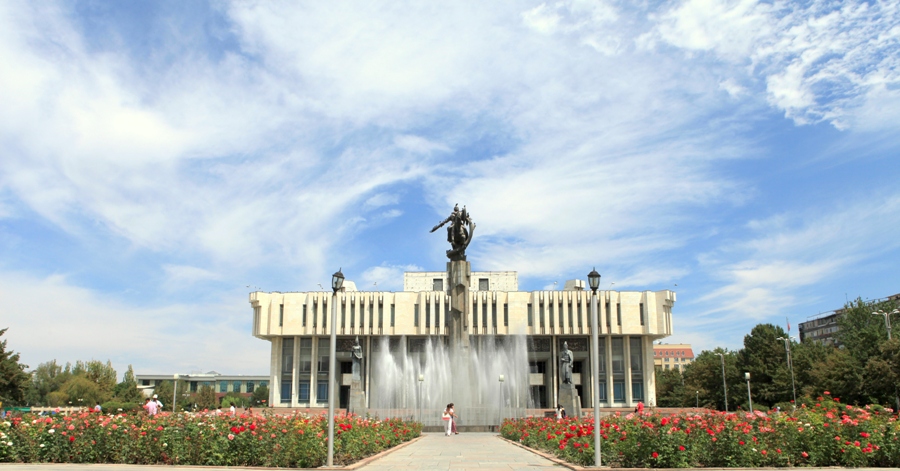 Kyrgyz capital, Bishkek, is the largest city in the country. It is a special administrative unit and a city of republican subordination. Old names are Pishpek, Frunze. Population is 860,700 inhabitants (2012). In contrast to the southern districts of the country, a high percentage of the population is Russian and Russian-speaking residents. The city is located in the north of Kyrgyzstan, in the Chui valley at the foothills of the Tien Shan Mountains, 40 km north of the Kyrgyz ridge at an altitude of 700-900 m above sea level, 25 km from the border with Kazakhstan. Bishkek city is a regional center for trade. In Bishkek operates the largest in Central Asia clothing market Dordoi, and the largest car market Azamat.
Kyrgyz capital, Bishkek, is the largest city in the country. It is a special administrative unit and a city of republican subordination. Old names are Pishpek, Frunze. Population is 860,700 inhabitants (2012). In contrast to the southern districts of the country, a high percentage of the population is Russian and Russian-speaking residents. The city is located in the north of Kyrgyzstan, in the Chui valley at the foothills of the Tien Shan Mountains, 40 km north of the Kyrgyz ridge at an altitude of 700-900 m above sea level, 25 km from the border with Kazakhstan. Bishkek city is a regional center for trade. In Bishkek operates the largest in Central Asia clothing market Dordoi, and the largest car market Azamat.International airport Manas is situated 23 km from the city limits of Bishkek. According to ICAO classification Manas is 4E class airport. Its runway length of 4.2 km is able to receive all types of aircrafts, including in adverse weather conditions. The airport has 38 parking spaces and two air bridges.
Climate in Kyrgyzstan is sharply continental with the transition to a continental one. Rainfall is relatively small; there are about 250 days of sunshine in a year. On the plains and in the lowlands the average temperature in January is 6 - 4 ° C below zero, in July it is + 18-24 ° C. In the highlands, both in winter and summer the temperature is cooler because of the constantly blowing winds from Siberia: minus 14-20 ° C in January and +8-12 °C in July. In the Fergana Valley in summer the thermometer usually rises above + 35 ° C.
The best time to visit Kyrgyzstan is September, when the whole country penetrates into a pleasant autumn heat. You can go to the alpine pastures jailoo from mid-May to early October; hiking and horseback tours are comfortable to hold from March to November in the south and from April to October in the north. Trekking and climbing are available throughout the year, the high-climbing is better to make at the end of June till October.
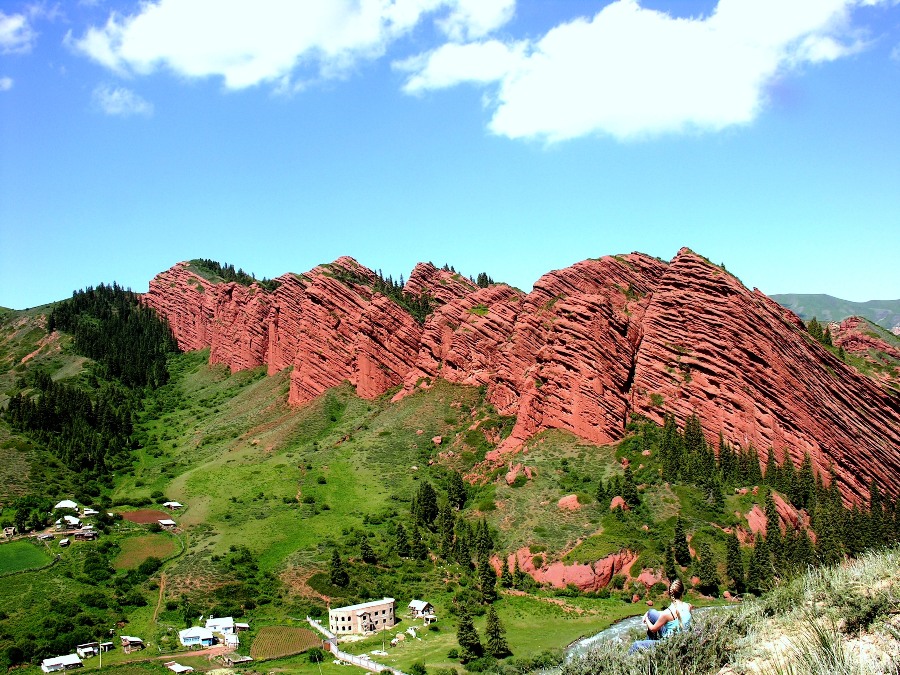 The unique natural sights and ancient cities of the Great Silk Road are two trumps of Kyrgyzstan in attracting tourists. On the territory of the State lie the Tien Shan and the Pamir, here is one of the largest and deepest lakes in the world - the Issyk-Kul, sung by poets of the East, relict walnut forests of mountain oasis Arslanbob, Djety Oguz canyon and radon, hydrogen sulfide thermal springs; legendary lakes Son Kul and Sary-Chelek, a giant glacier Inylchek and many other natural wonders.
The unique natural sights and ancient cities of the Great Silk Road are two trumps of Kyrgyzstan in attracting tourists. On the territory of the State lie the Tien Shan and the Pamir, here is one of the largest and deepest lakes in the world - the Issyk-Kul, sung by poets of the East, relict walnut forests of mountain oasis Arslanbob, Djety Oguz canyon and radon, hydrogen sulfide thermal springs; legendary lakes Son Kul and Sary-Chelek, a giant glacier Inylchek and many other natural wonders.Lovers of mountains climb to the peaks of Lenin, Pobeda (Victory) and Khan-Tengri, fans of tracking explore Turkestan Range and lakes of Western Tien Shan. Skiers cannot wait to see the opening of the season, to cut up the first snow on the slopes of Kashka-Suu, Norus and Toho Ashu. By the way, alpine Kyrgyzstan offers rich opportunities for heli-skiing and paragliding.
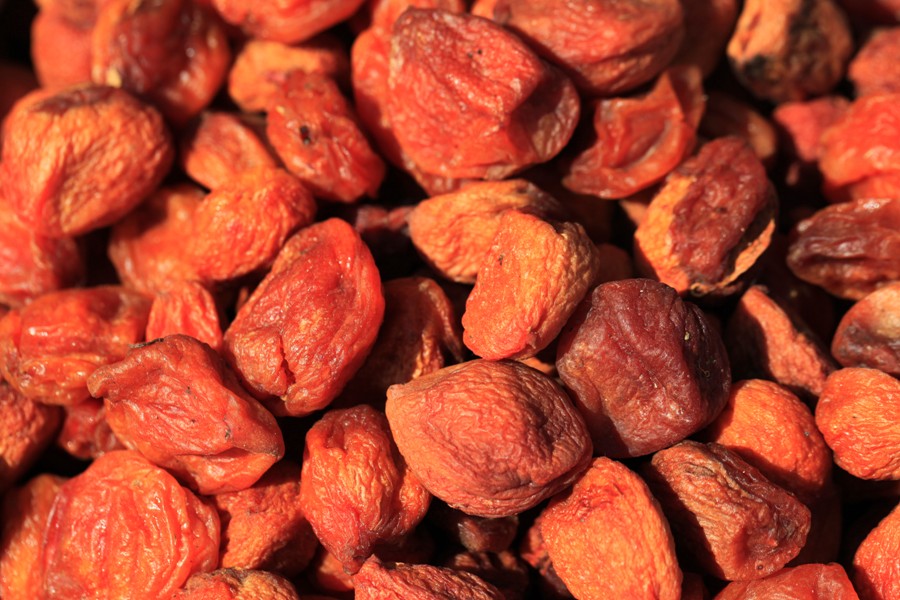 Attractions of Bishkek include: the ancient and colorful bazaar of Osh, Ala-Too Square, Monument of Independence and the Parliament building, the Museum of National History and Art Museum, historic forest and Erkindik gallery.
Attractions of Bishkek include: the ancient and colorful bazaar of Osh, Ala-Too Square, Monument of Independence and the Parliament building, the Museum of National History and Art Museum, historic forest and Erkindik gallery.In the vicinity of the town it is worth visiting natural park "Baytyksk Valley" and coming up to mount Boz Peldek, which offers a beautiful view of Bishkek. In the southern slope of the hill is a cemetery "Khan's grave", where the legendary ruler of the valley is buried. Pay attention to the wrought-iron tower with a magnificent dome. You can see rare plants in the botanical reserve Chon-Aryk and improve your health at the field of peat mud in Kamyshanovka village.
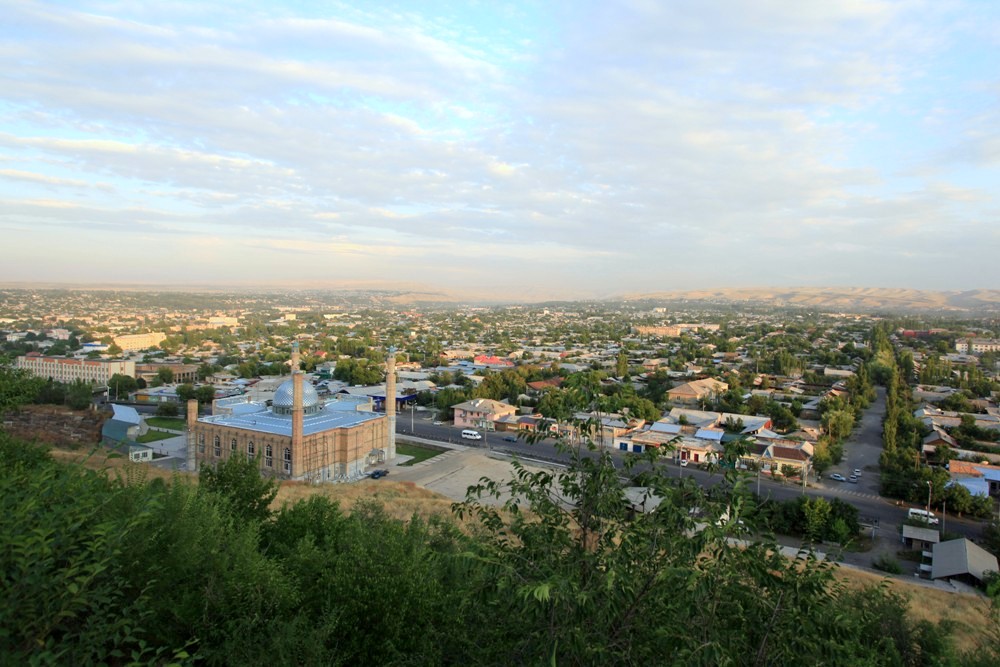 Osh is located in the piedmont oasis, which had long been inhabited by people long before the arrival of people from the Yenisei Kyrgyz (about 800 years ago). Settlement of farmers of the Bronze Age was found on the southern slope of Mount Sulaiman-Too. Osh is one of the oldest settlements of Kyrgyzstan, now officially invited to believe that the history of the city has about 3 thousand years. However historical science counts the age of the city or settlement from the earliest historical references in historical acts. The earliest mention of the city is in the chronicles of the IX century BC, which still allows us to consider it the oldest city in the country.
Osh is located in the piedmont oasis, which had long been inhabited by people long before the arrival of people from the Yenisei Kyrgyz (about 800 years ago). Settlement of farmers of the Bronze Age was found on the southern slope of Mount Sulaiman-Too. Osh is one of the oldest settlements of Kyrgyzstan, now officially invited to believe that the history of the city has about 3 thousand years. However historical science counts the age of the city or settlement from the earliest historical references in historical acts. The earliest mention of the city is in the chronicles of the IX century BC, which still allows us to consider it the oldest city in the country.In the X century Osh was considered the third largest city of Ferghana, being the point of intersection of caravan routes from India and China to Europe. In Osh, there are remarkable monuments of Islamic architecture in Ferghana style: madrassahs of Alymbek Paravanchi and Muhamedboy Turk hal Muratbaev, mosques of Sadykbay and Shahid Tepa.
Russian Orthodox Church of Archangel Michael (the beginning of the 20th century) is worth visiting. Among the historical sites is an old cemetery, a complex of medieval baths, and ancient petroglyphs. In addition, Osh is a "gateway to the mountains": from here you can climb the Pamir and Tien Shan, see the cave Chil-Ustun and Chil-Myra, as well as the unique karst spring - waterfall Abshir-Sai. Osh Airport is active in taking and sending domestic and international flights.
Lake Issyk-Kul is the second largest in the world and, perhaps, the first by an amazing color of water - saturated blue, ultramarine almost. Water of the Issyk-Kul is extremely transparent and slightly salty to taste, as about 80 rivers flows in it, and none of them flows out of it. In the vicinity of the lake there are hot springs and curative mud deposits.
One can live a nomadic life of the Kyrgyz by going to the high pastures jailoo - healthy sleep under a canopy of yurt, a cup of kumys (horse milk) in the morning and all day in the fresh air - that's the guarantee of health in an Asiatic.
REFERENCE
State structure of Kyrgyzstan
Kyrgyzstan is a sovereign, unitary, democratic republic founded on the legal, secular state, which includes seven regions and 2 cities of republican value. Parliament of the Republic - Jogorku Kenesh, has priority to make and determine the most important decisions and policies of the state. The Parliament is unicameral and consists of 120 deputies elected for a term of five years by party lists.
Currency is Kyrgyz Som.
Administrative division of Kyrgyzstan
Kyrgyzstan consists of 7 areas and 2 cities of republican significance:
Batken region
Chui region
Jalal-Abad region
Naryn region
Osh region
Talas region
Issyk-Kul region
Bishkek and Osh cities
Economy of Kyrgyzstan
Kyrgyzstan's economy consists mainly of industry and agriculture, and agriculture employs more than half of the workforce. About half a million residents of Kyrgyzstan go to work abroad. In 2011 migrants remittances amounted to 29% of GDP.
Industry is represented by energy and mining industry. A significant part of agricultural products is exported. An important source of income of Kyrgyzstan is tourism sphere.
Population: more than 5.5 million people (2013)
Religion
Muslims - 75%, Russian Orthodox - 20%, other - 5%
Language
The official language of the Kyrgyz Republic is the Kyrgyz language.
Public Holidays
January 1 - New Year
January 7 - Christmas
February 23 - Defender of the Fatherland Day
March 8 - International Women's Day
March 21 - Nooruz
May 1 - Spring and Labour Day
May 5 - Day of the Constitution of Kyrgyzstan
May 9 - Victory Day
June 7 - Day of the financial and economic employees
August 31 - Independence Day
November 7 - Day of the Great October Socialist Revolution
Orozo Ait and Kurman Ait are determined by the lunar calendar.
Visa
From July 24, 2012, visa-free regime of the Republic of Kyrgyzstan within 60 days, is valid for citizens of the following countries: Australia, Austria, Bahrain, Belgium, Bosnia and Herzegovina, Brunei Darussalam, Canada, Croatia, Czech Republic, Denmark, Estonia, Finland, France, Germany, Greece, Hungary, Iceland, Ireland, Italy, Korea, Kuwait, Latvia, Liechtenstein, Lithuania, Luxembourg, Malta, Monaco, the Netherlands, New Zealand, Norway, Poland, Portugal, Qatar, Saudi Arabia, Singapore, Slovakia, Slovenia, Spain, Sweden, Switzerland, United Arab Emirates, United Kingdom of Great Britain and Northern Ireland, United States Of America, Vatican.
Visa for entry to the territory of Kyrgyzstan within 1 month is not required for holders of diplomatic and service passports of the following States: People's Republic of China (also for the holders of the ordinary passports for service assignment), Republic of Hungary, Turkmenistan, Uzbekistan.
Visa-free regime is also valid for citizens of the following CIS countries: Armenia, Azerbaijan, Belarus, Georgia, Kazakhstan, Moldova, Mongolia (up to 3 months), Russia, Tajikistan, Ukraine.
Foreign citizens of the other states can enter to Kyrgyzstan and transit through its territory only if there is an entry visa to Kyrgyzstan.
Customs
There are no restrictions on the import and export of local and foreign currency (all the money and valuables are obligatory to declare). The declaration must be stored prior to departure from the country.
You can bring to Kyrgyzstan duty-free up to 1000 cigarette or to 1000 grams of tobacco products, up to 1.5 liters of spirits and 2 liters of wine. You will be able to bring a reasonable quantity of perfume for personal use and other goods worth no more than $ 5,000. Customs inspection is sometimes long and detailed.
The import of drugs and potent medications (non-prescription, confirming the necessity of their application), weapons and ammunition, fuel and explosives, printed materials and video directed against the political system of Kyrgyzstan, as well as animals, fruits and vegetables without a permit from Sanitary veterinary Service of the country is banned in Kyrgyzstan.
The export of certain food, minerals and rocks, gold (declared) and precious stones is prohibited without the permission of the relevant authorities.
Helpful information
Internet domain - kg
Telephone code - 996
Voltage - 220 V AC, 50 A; standard two-pin plug socket
Time: GMT +6 hours
Kyrgyzstan is a sovereign, unitary, democratic republic founded on the legal, secular state, which includes seven regions and 2 cities of republican value. Parliament of the Republic - Jogorku Kenesh, has priority to make and determine the most important decisions and policies of the state. The Parliament is unicameral and consists of 120 deputies elected for a term of five years by party lists.
Currency is Kyrgyz Som.
Administrative division of Kyrgyzstan
Kyrgyzstan consists of 7 areas and 2 cities of republican significance:
Batken region
Chui region
Jalal-Abad region
Naryn region
Osh region
Talas region
Issyk-Kul region
Bishkek and Osh cities
Economy of Kyrgyzstan
Kyrgyzstan's economy consists mainly of industry and agriculture, and agriculture employs more than half of the workforce. About half a million residents of Kyrgyzstan go to work abroad. In 2011 migrants remittances amounted to 29% of GDP.
Industry is represented by energy and mining industry. A significant part of agricultural products is exported. An important source of income of Kyrgyzstan is tourism sphere.
Population: more than 5.5 million people (2013)
Religion
Muslims - 75%, Russian Orthodox - 20%, other - 5%
Language
The official language of the Kyrgyz Republic is the Kyrgyz language.
Public Holidays
January 1 - New Year
January 7 - Christmas
February 23 - Defender of the Fatherland Day
March 8 - International Women's Day
March 21 - Nooruz
May 1 - Spring and Labour Day
May 5 - Day of the Constitution of Kyrgyzstan
May 9 - Victory Day
June 7 - Day of the financial and economic employees
August 31 - Independence Day
November 7 - Day of the Great October Socialist Revolution
Orozo Ait and Kurman Ait are determined by the lunar calendar.
Visa
From July 24, 2012, visa-free regime of the Republic of Kyrgyzstan within 60 days, is valid for citizens of the following countries: Australia, Austria, Bahrain, Belgium, Bosnia and Herzegovina, Brunei Darussalam, Canada, Croatia, Czech Republic, Denmark, Estonia, Finland, France, Germany, Greece, Hungary, Iceland, Ireland, Italy, Korea, Kuwait, Latvia, Liechtenstein, Lithuania, Luxembourg, Malta, Monaco, the Netherlands, New Zealand, Norway, Poland, Portugal, Qatar, Saudi Arabia, Singapore, Slovakia, Slovenia, Spain, Sweden, Switzerland, United Arab Emirates, United Kingdom of Great Britain and Northern Ireland, United States Of America, Vatican.
Visa for entry to the territory of Kyrgyzstan within 1 month is not required for holders of diplomatic and service passports of the following States: People's Republic of China (also for the holders of the ordinary passports for service assignment), Republic of Hungary, Turkmenistan, Uzbekistan.
Visa-free regime is also valid for citizens of the following CIS countries: Armenia, Azerbaijan, Belarus, Georgia, Kazakhstan, Moldova, Mongolia (up to 3 months), Russia, Tajikistan, Ukraine.
Foreign citizens of the other states can enter to Kyrgyzstan and transit through its territory only if there is an entry visa to Kyrgyzstan.
Customs
There are no restrictions on the import and export of local and foreign currency (all the money and valuables are obligatory to declare). The declaration must be stored prior to departure from the country.
You can bring to Kyrgyzstan duty-free up to 1000 cigarette or to 1000 grams of tobacco products, up to 1.5 liters of spirits and 2 liters of wine. You will be able to bring a reasonable quantity of perfume for personal use and other goods worth no more than $ 5,000. Customs inspection is sometimes long and detailed.
The import of drugs and potent medications (non-prescription, confirming the necessity of their application), weapons and ammunition, fuel and explosives, printed materials and video directed against the political system of Kyrgyzstan, as well as animals, fruits and vegetables without a permit from Sanitary veterinary Service of the country is banned in Kyrgyzstan.
The export of certain food, minerals and rocks, gold (declared) and precious stones is prohibited without the permission of the relevant authorities.
Helpful information
Internet domain - kg
Telephone code - 996
Voltage - 220 V AC, 50 A; standard two-pin plug socket
Time: GMT +6 hours

Review 

The trip which Orient arranged was very good in every way and enabled us to see the variety of attractions for visitors to Uzbekistan, especially the historic buildings, modern cities ...
all reviews
all reviews



.jpg)










